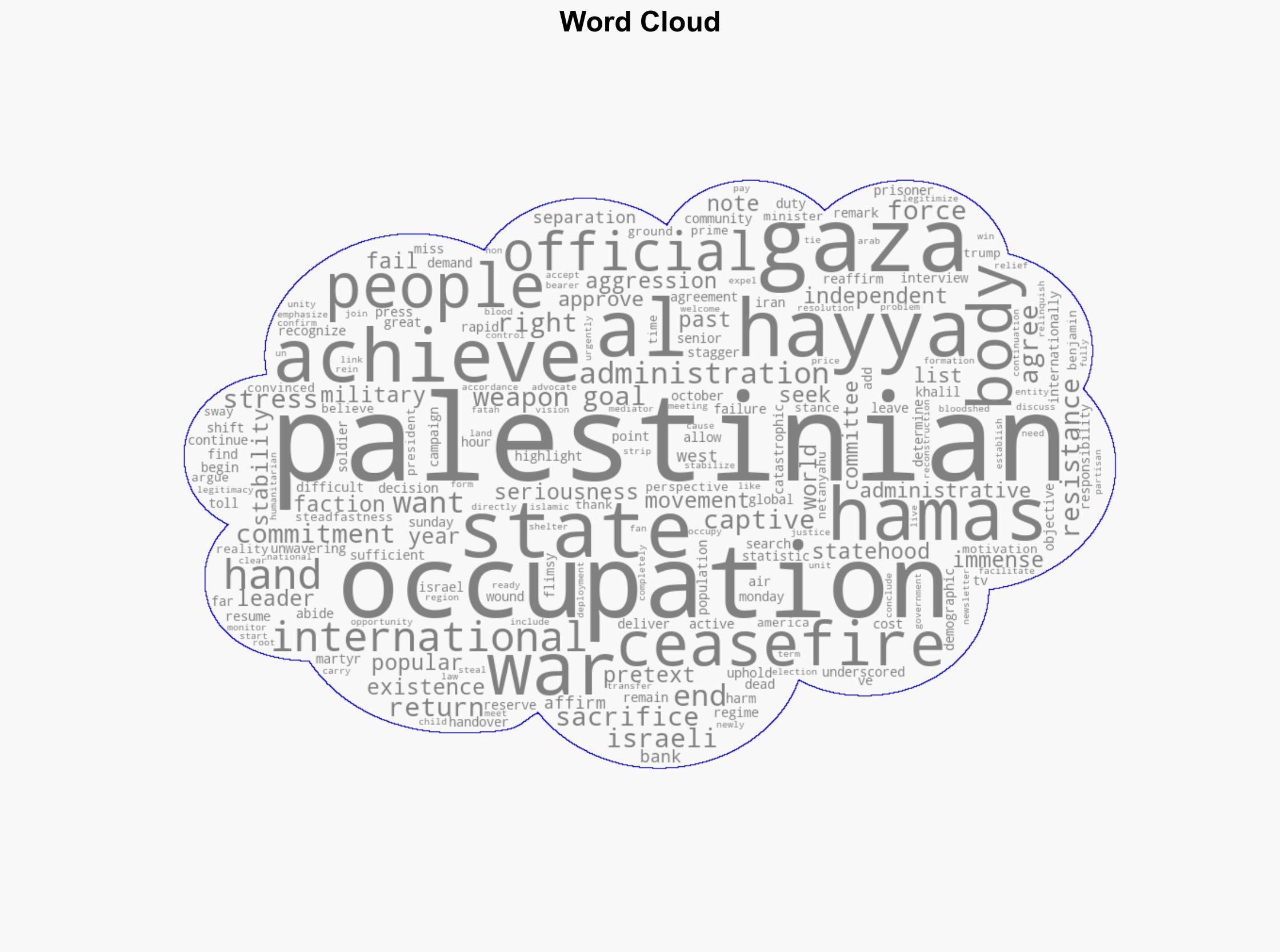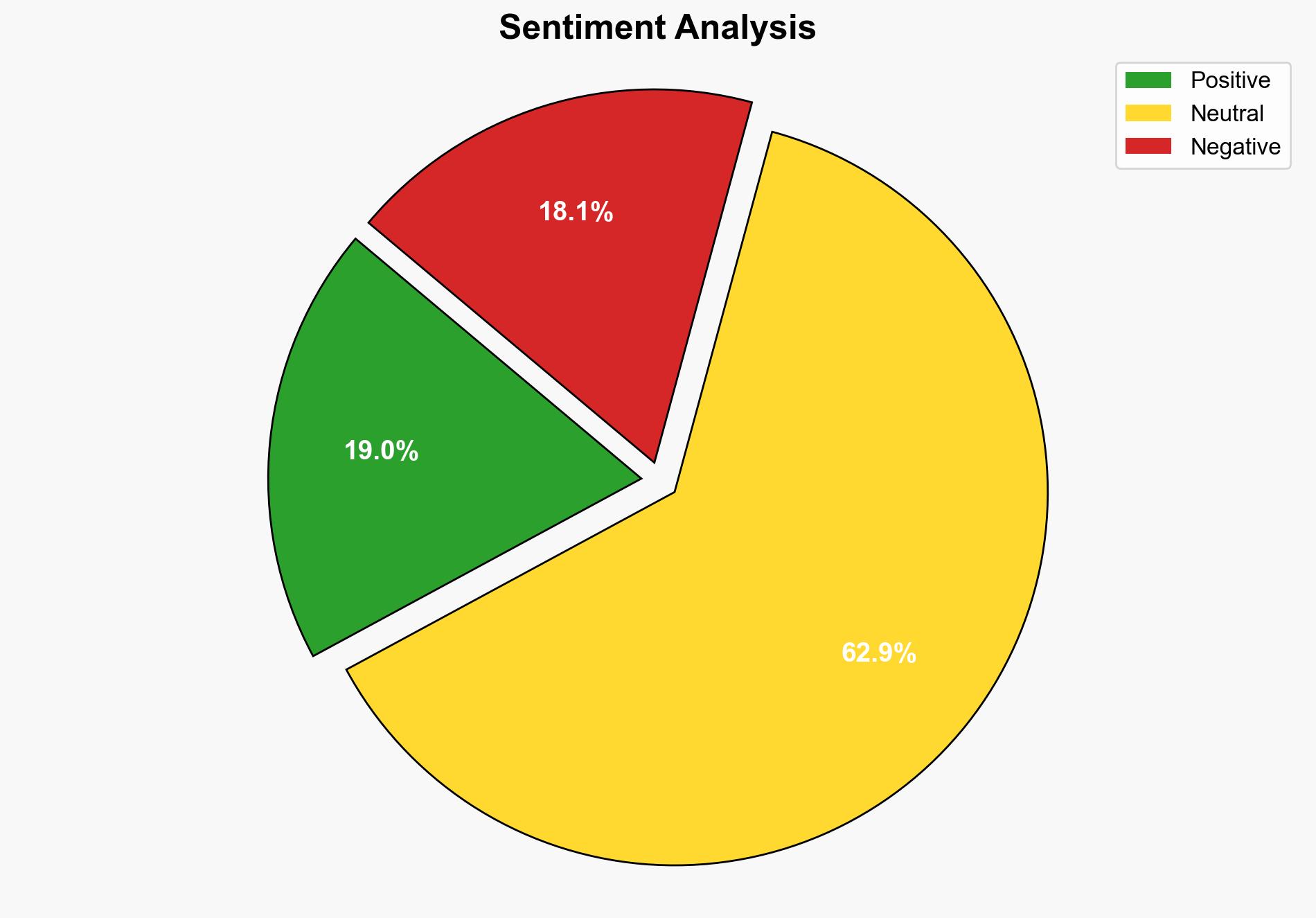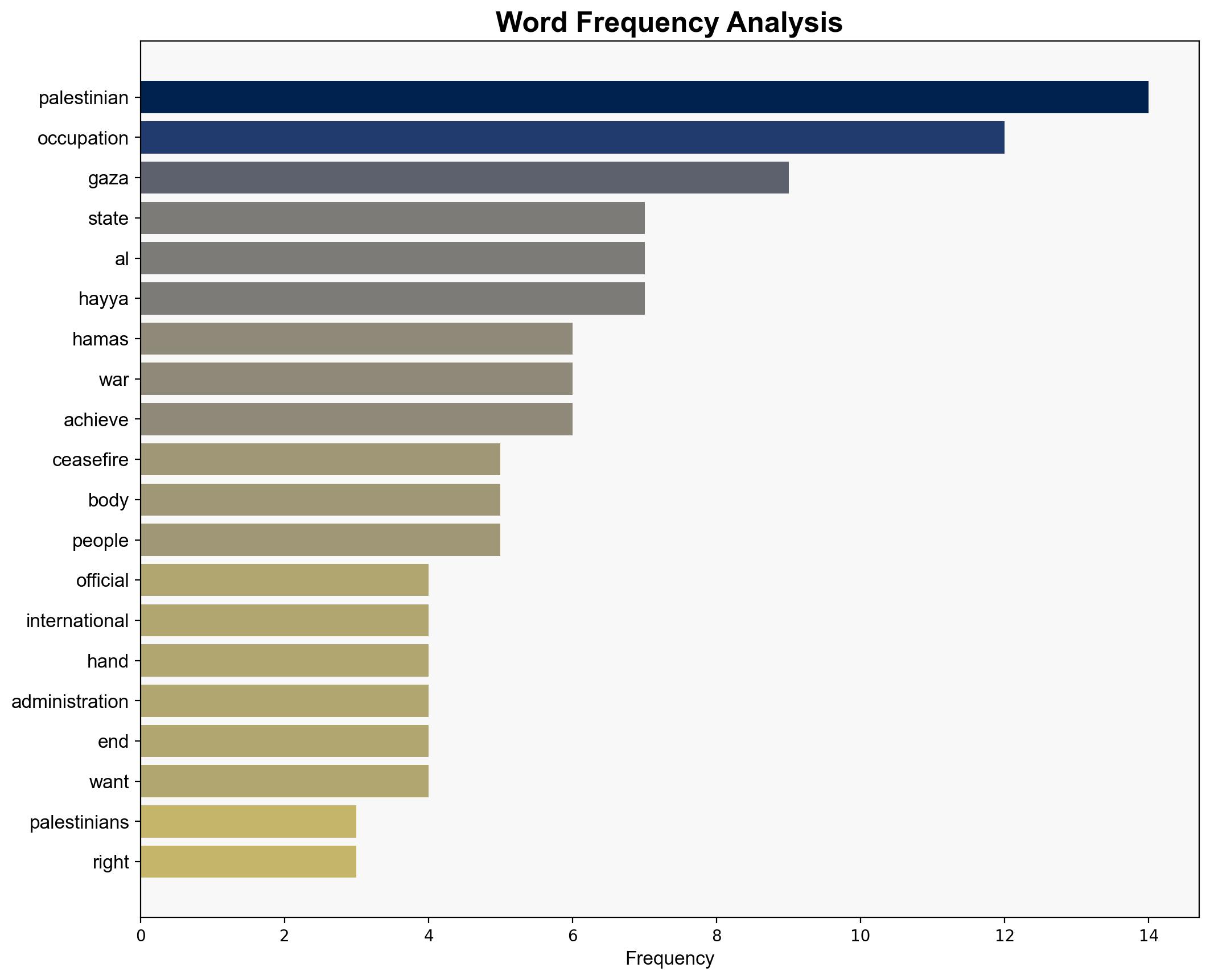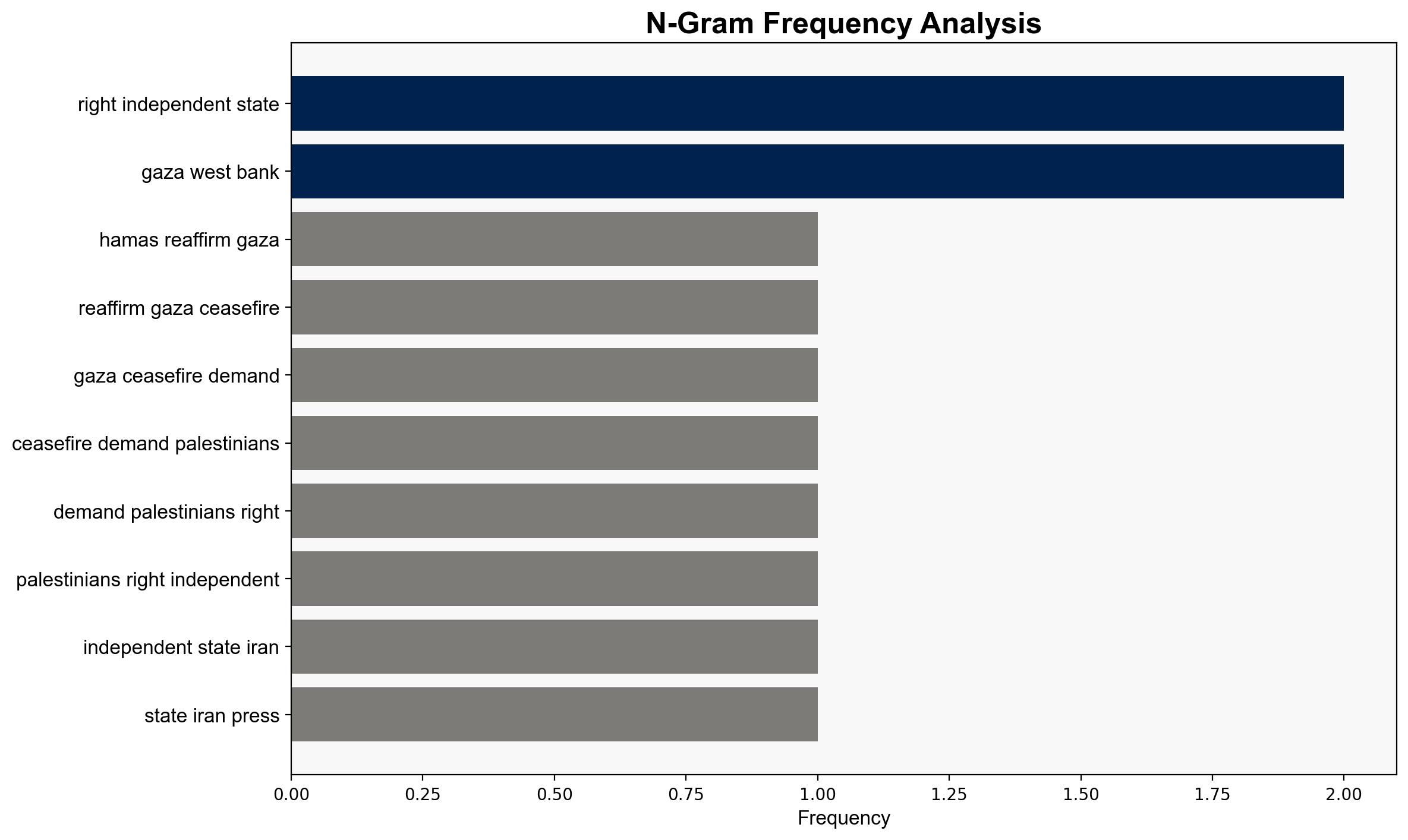Hamas reaffirms Gaza ceasefire demands Palestinians’ right to independent state – Globalsecurity.org
Published on: 2025-10-27
Intelligence Report: Hamas reaffirms Gaza ceasefire demands Palestinians’ right to independent state – Globalsecurity.org
1. BLUF (Bottom Line Up Front)
Hamas’s reaffirmation of its demands for a Gaza ceasefire and an independent Palestinian state suggests a strategic positioning to consolidate political legitimacy and international support. The most supported hypothesis is that Hamas aims to leverage international pressure to achieve political gains, including statehood recognition. Confidence level: Moderate. Recommended action: Engage with international mediators to facilitate dialogue and monitor compliance with ceasefire terms.
2. Competing Hypotheses
1. **Hamas is genuinely committed to a ceasefire and statehood**: This hypothesis suggests that Hamas is seeking a long-term resolution to the conflict through international recognition and stability, as indicated by their willingness to relinquish administrative control of Gaza and accept international monitoring.
2. **Hamas is using the ceasefire demands as a strategic ploy**: This alternative posits that Hamas’s public commitment is a tactical maneuver to gain time, regroup, and strengthen its position while maintaining the appearance of seeking peace.
Using Analysis of Competing Hypotheses (ACH), the first hypothesis is better supported by the explicit statements of willingness to engage in international processes and the acceptance of international monitoring.
3. Key Assumptions and Red Flags
– **Assumptions**: The assumption that Hamas’s public statements reflect genuine intentions. Another assumption is that international actors will respond positively to Hamas’s overtures.
– **Red Flags**: The potential for Hamas to exploit the ceasefire for military regrouping. The lack of concrete actions accompanying the statements raises questions about sincerity.
– **Blind Spots**: The internal dynamics within Hamas and potential dissenting factions that may not support the leadership’s public stance.
4. Implications and Strategic Risks
– **Geopolitical Risks**: Failure to achieve a ceasefire could lead to renewed hostilities, impacting regional stability.
– **Economic Risks**: Prolonged conflict may exacerbate humanitarian crises, affecting economic conditions in Gaza and neighboring regions.
– **Psychological Risks**: Continued conflict could increase radicalization and diminish prospects for peace.
– **Escalation Scenarios**: Breakdown in negotiations could lead to military escalation, drawing in regional actors and complicating international diplomatic efforts.
5. Recommendations and Outlook
- Facilitate international mediation to ensure compliance with ceasefire terms and address humanitarian needs.
- Monitor Hamas’s actions closely to verify alignment with public statements.
- Scenario Projections:
- **Best Case**: Successful ceasefire leads to renewed peace talks and gradual recognition of Palestinian statehood.
- **Worst Case**: Ceasefire collapses, leading to intensified conflict and regional destabilization.
- **Most Likely**: Prolonged negotiations with intermittent skirmishes, requiring sustained international engagement.
6. Key Individuals and Entities
– Khalil al-Hayya: Senior Hamas official advocating for ceasefire and statehood.
– Israeli regime: Opposing party in the conflict.
– International community and mediators: Potential facilitators of dialogue and peace.
7. Thematic Tags
national security threats, geopolitical stability, conflict resolution, regional focus




